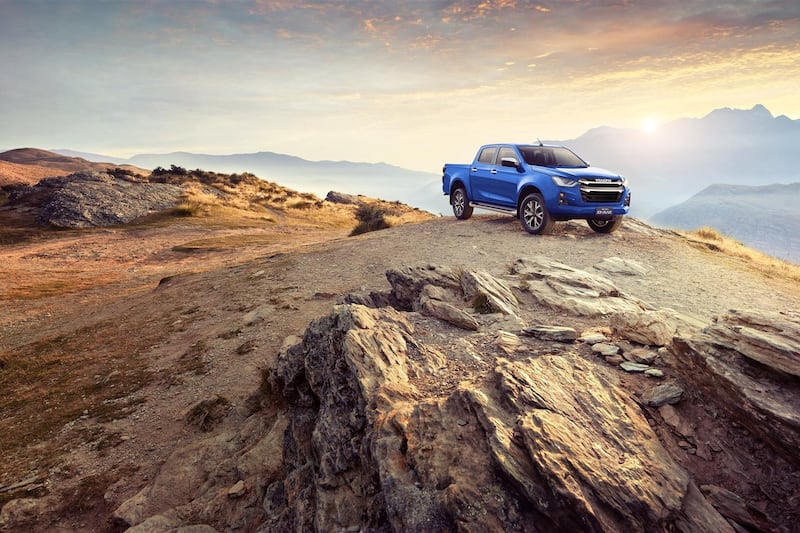AS usual, my timing was all wrong, writes William Scholes. Had I managed things a bit better, I'd have had the wit to arrange to have an Isuzu D-Max on test to lend a hand when, as per my orders, I set about using some time off work to 'declutter' our garage and tackle some long overdue gardening/lawn scything.
Instead, I had to lug the junk into the back of our Mini and make repeated trips to the dump - sorry, 'household recycling centre' - which was less than ideal.
Though it would have cured my dump/household recycling centre inferiority complex, the D-Max is capable of a whole lot more.
Pick-ups these days have become increasingly car-like in how they drive - less agricultural and lighter to operate, more refined and economical - but when push comes to shove, these are fundamentally highly capable work tools.
While there is a growing market of people who use pick-ups for 'lifestyle' pursuits - mostly towing boats or horse boxes - most are used by professionals who haul bales of hay, pull trailers full of animals and need to carry lots of heavy items. Plasterers, brickies and pavers don't use pick-ups for fun, nor do farmers or the engineers who have to fix powerlines in storms.
Read more: Forget Tesla - here are three 'eco-mods' which turn classics into EVs
Here at Drive, we've always rather liked the D-Max. It's a pick-up built by a company that basically builds only pick-ups, so it feels like a vehicle built by specialists.
Isuzu backs itself with a generous 125,000-mile, five-year warranty. There's no shortage of choice, either - body styles include single-, extended- and double-cab - and you can have a manual or automatic gearbox. It'll carry up to 1,160kg on its load bed, and can tow up to 3.5 tonnes.

There's proper four-wheel-drive too, with a low ratio configuration for extra-tricky conditions. The 1.9-litre diesel engine's outputs of 162bhp and 265lb ft may sound relatively modest, but the D-Max manages to punch far harder than those numbers suggest.
Pick-ups used to lag behind when it came to safety equipment; not so the D-Max, which has a full five-star Euro NCAP rating. Double-cab versions have eight airbags, for example, and all versions get cruise control, forward collision warning, traffic sign recognition, autonomous emergency braking, land departure warning and a speed limiter.
In addition, double-cab models have blind spot monitor, emergency lane keeping and rear cross-traffic alert. Specify an automatic gearbox - and around 20 per cent of buyers do - and you even get adaptive cruise control. It all rather sounds more like a Volvo than a pick-up…
The D-Max is still a traditional body-on-frame construction, meaning the bodywork is bolted to the strong ladder chassis rather than being a car-like monocoque where the chassis is part of the body.
Taken together, it's a pleasant enough vehicle to drive. The height gives an imperious view of the road and the cabin is roomy and well kitted out. Tough plastics and a no-nonsense layout to the dashboard emphasise that the D-Max is first and foremost a workhorse.
Compared to an average family car, the Isuzu's steering and pedal response is ponderous, though the same can be said of rivals. It's noisier than a family hatch too. All that is to be expected, I would say, and rather underlines that even the best truck isn't a practical substitute for a family car.
However, if you really need proper towing grunt and genuine off-road ability, the D-Max is worth looking at as an alternative-with-attitude to an SUV. Just don’t condemn it to a life of dump-runs - its talents run much deeper than that.
Isuzu D-Max prices start (ex-VAT, as these are commercial vehicles) at a very precise £23,929 for a bare bones single-cab, rear-wheel-drive Utility model and stretch to a smidgen under £50k for the Arctic Trucks AT35, which is the sort of thing that Bear Grylls or Sir Ranulph Fiennes might take on an expedition.






